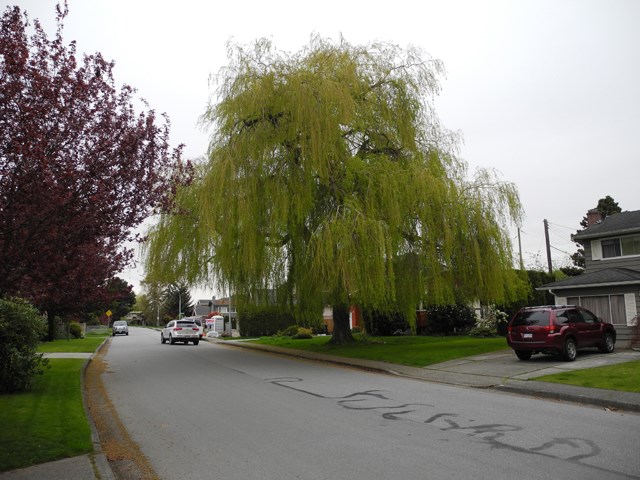Dear Editor,
This beautiful old weeping willow (pictured at right) will soon be cut down to satisfy the demands of the developer and/or new owner of the new house that will be built on the property behind it at 8380 Seafair Drive.
This tree is on city property and one might be justified in wondering if its removal is simply to accommodate a third garage unit which will probably end-up like so many others in the city being used for storage rather than vehicle parking, and/or for another vast, over-sized, bricked or concrete driveway where a car without licence plates and a forlorn, unused basketball net will sit for months or years on end?
Perhaps, the manager of Richmond’s tree department — the department that is supposed to protect Richmond’s trees — would like to explain, in this publication, to the citizens of Richmond exactly why this wonderful tree has to be cut down. And I do hope the explanation is not that it is rotting from the inside because we can provide examples of where perfectly healthy trees in our neighbourhood have been designated as rotten and cut down and then proven otherwise after the fact.
If the citizens of Richmond do not make their displeasure at the destruction of magnificent trees like this to satisfy the demands of contractors and/or investors evident to the mayor and city council, then this kind of sterilization of the Richmond landscape will continue and we will have nothing left but big houses and token shrubbery to look at as we walk the streets of our already increasingly unoccupied neighbourhoods.
Is this nothing more than another example of handing the control of the design of our neighbourhoods to those who do not care at all about greenery? And how it enhances the character and quality of our lives?
And is this another instance where it would seem justifiable to ask our elected officials and civil servants who they are really serving?
Ray Arnold
Richmond



